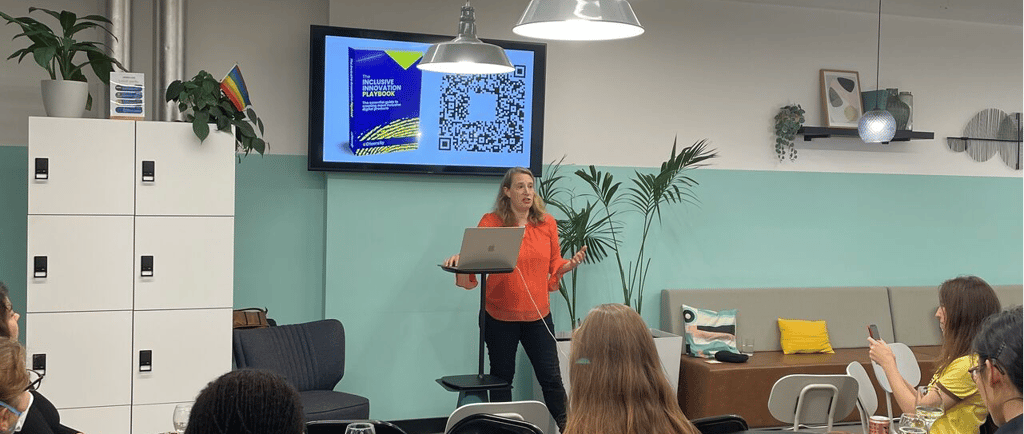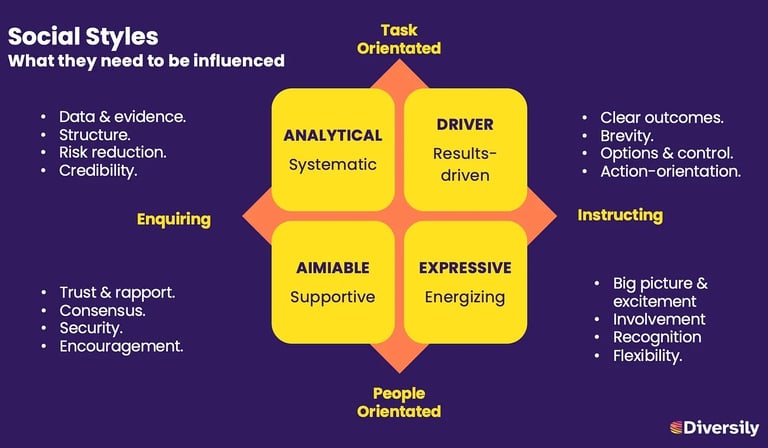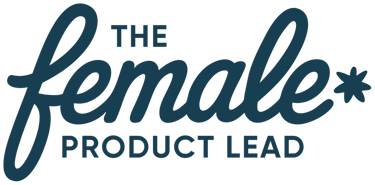Inclusion as a Product Strategy: Using Your Influence for Meaningful Impact
Learn about inclusion as a competitive advantage and a product strategy that drives better outcomes for users, teams, and businesses alike.
EVENTSINCLUSION
Kanchan
9/27/20254 min read


Great product leaders don’t just ship features. They change lives. They think about who is being left out, so they can serve them more fully and fairly. Inclusion isn’t a nice-to-have. It’s a competitive advantage and a product strategy that drives better outcomes for users, teams, and businesses alike.
Inclusive innovation matters now more than ever!
Inclusive product practices not only increase customer satisfaction and enhance brand reputation, they have a positive social impact and make the world a better place. The advantages are clear but not obvious to all - product leaders need to convince their teams and company leadership to make inclusive innovation a central strategy.
This is what Marissa Ellis, a strategist, advisor, best selling author, and a thought leader in ‘inclusive intelligence’, focuses on through the company she founded, Diversily. Diversily is a global inclusion consultancy helping forward-thinking organisations transform how they lead, think, and innovate—turning inclusion into a growth lever to build stronger teams, design better products, and scale responsibly. Check out their most popular workshops here. You are also invited to Amplify: The Inclusive Innovation Collective, a movement driving collective action to make inclusive innovation the norm, not the niche. Want to be part of the movement?
Last week, the Female Product Lead, in partnership with Amplify, hosted an in-person interactive session with Marissa on what it means to have inclusive product strategy, why it is important and how product leaders should go about implementing it. The session was attended by product leaders from different industries and turned out to be an energising and interactive discussion on how product leaders can leverage their influence to create impactful digital products and services that are equitable, accessible and empowering for all users. Read on to get the key takeaways from the session.
Why adopt more inclusive product practices?
Customer Obsession vs. Selective Blindness: You can’t truly claim to be customer-centric while ignoring entire communities.
User Research vs. Biased Insights: If you don’t seek diverse perspectives in research, you build blind spots, misdesign, and waste investment.
Scalability vs. Exclusion at Scale: Exclusion in early stages is multiplied at scale.
Innovation vs. Imitation: Without diverse inputs, you miss new breakthroughs.
Collaboration vs. Echo Chambers: Homogenous teams reinforce groupthink rather than novel insights.
Experiment-Driven vs. Flawed Tests: Experiments with narrow participant pools produce misleading conclusions.
How to adopt inclusive product practices?
Turning ideas into actions
Product leaders who want to embed inclusion into how products are imagined, built, and scaled, need to get buy-in from team members and company leadership to make inclusion a central product strategy. Everyone involved needs to understand the benefits and contribute.
So how do product leaders get this buy-in? This is where influencing styles matter. Contrary to popular belief, it's not always data and logic alone that influence others. It is important for product leaders to also tune into the values and belief systems, emotions and social and behavioral styles of the people they work with. Influencing takes different forms when engaging with people of different social styles, as illustrated in the schematic below.
During the workshop, Marissa asked the audience on how they’d use their influence to drive positive change. This led to an engaging discussion on influencing strategies and some actionable insights are mentioned below.
Influence via culture and norms
People often follow what’s “normal” rather than what’s ideal. If you can subtly shift norms, what’s valued, mindsets, habits, what gets rewarded, you influence behaviour indirectly but powerfully.
Example: Celebrate stories of inclusive design wins. Invite people from typically underserved groups to talk about what makes products they use great. Over time, talking about inclusivity becomes a natural, expected part of how people assess success, even without formal rules.
Influence via frameworks and processes
Formal structures, rules, or checkpoints embed behaviour into workflows. This is codifying influence into the operational machinery of the organisation.
Example: Embed diversity into your design personas and user testers This converts your intention into a structural requirement rather than a debate.
Influence via narrative and storytelling
People act on stories, not statistics. Position your ideas in a narrative that aligns with organisational or individual priorities (growth, risk mitigation, customer trust).
Example: Use story telling to humanise empathy and highlight different perspectives. Frame the story to fit the social style of your audience and focus on what matters to them. Embed user quotes into a data driven report to create a more compelling narrative.
Influence via coalition-building
Real change often requires more than one advocate. Build networks of allies across teams who adopt and propagate your approach, creating a “critical mass” that normalizes the behavior you want to see.
Example: Group stakeholders into supporters, neutrals, detractors. Focus on finding common ground with supporters with influence and recruit them to take small steps together.
All in all, the event was a success with loads of actionable insights packed in with engaging peer discussions! FPL and Diversily are committed to promoting inclusion and equity in product, and we’ll be planning more such events in future. Stay tuned!
If you are a product person who wants to lead with purpose and influence with impact, and embed inclusion into how products are imagined, built, and scaled, you should check out Diversily’s Inclusive Innovation Playbook.


